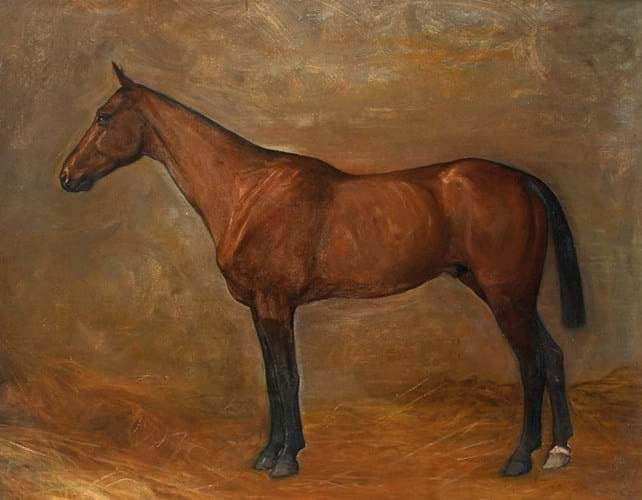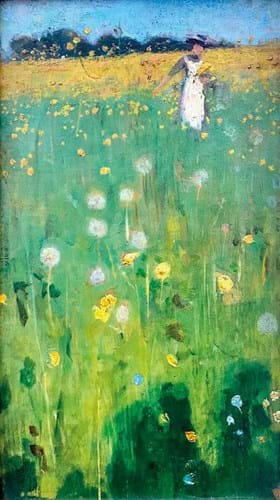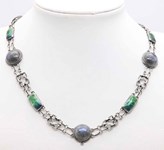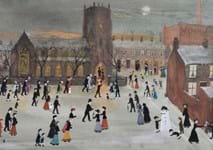Even when it comes to major names, the way the market favours the ‘right’ sort of work was laid bare at Grand Auctions (20% buyer’s premium) on July 4 when one early Sir William Nicholson (1872-1949) got away but two were left unsold.
The pictures came to auction in Folkestone, Kent, from a local source with a history of ownership that could be traced back to the artist’s sister Mabel.
Believed to date from around the time the artist left Herkomer’s Art School in Bushey, Hertfordshire, in 1891, they had all featured in Patricia Reed’s catalogue raisonné of Nicholson’s paintings.
The first work on offer was the smallest of the three but performed best. The Dandelion Field, an 8 x 5in (21 x 13cm) oil on panel, benefited from being the brightest and most freely painted as well as having appeared at the dedicated exhibition at the Royal Academy in 2004-05.
Estimated at £15,000-20,000, it was knocked down at £25,000 to the London trade.
The other works were darker figurative compositions which were perhaps more difficult in terms of what the market prefers.
Girl in a Chair, dated to 1892, failed to sell against the same estimate while Woman by a Window, a work of the same date, also remained unsold against a higher pitch of £30,000- 50,000.
Sassoon family source
A couple of later and more valuable works by Nicholson had also featured just over a month earlier at Woolley & Wallis (25% buyer’s premium) in Salisbury.
A still-life that came as part of the collection that had descended through the family of Siegfried Sassoon was, by far, the leading light of the sale, selling at £440,000 to London dealer Richard Green and setting the second-highest price for the artist at auction (see ATG No 2546).
Another interesting Nicholson work at the May 31 auction was rather different in style, subject and approach. Consigned separately, Turtle Soup had been purchased by Beaumont Pease, 1st Baron Wardington, from the Leicester Galleries in London in 1938 and it came to auction via family descent.
The image of a livery dinner taking place at Goldsmith’s Hall was a fairly unusual subject for the artist, although not unprecedented. The 17¼ x 12in (44 x 31cm) oil on panel from 1937 was signed with the initial N to the lower left. It came about after the artist was invited to the venue by Lord Wardington earlier that year.
Shortly after painting it, Nicholson said in a letter to Geoffrey Taylor: ‘Turtle Soup’ M.S. named it, with many elderly backbonesofoldoldEngland hidden behind a weight of decorations and, overhead, a chandelier that may descend on them any moment by its own paint weight…’ MS refers to the novelist Marguerite Steen who was Nicholson’s lover from 1935 until his death.
In terms of similar works offered before, the most comparable was a larger work from 1934, City Dinner, which depicts a dinner at the Drapers’ Company and which sold for £82,000 at Christie’s in 2005.
With Patricia Reed herself assisting the auction house with the cataloguing here, the work was pitched at £25,000-35,000 but sold at £60,000 to a private collector – a remarkably similar price to the Christie’s picture per square inch.
Making a useful contribution to the bottom line, the sum added to the £494,000 from the 77 lots from the Sassoon collection, 70 of which sold, to bolster the total in Salisbury.
Favourite horse

Portrait of Siegfried Sassoon’s hunter, Cockbird, catalogued as ‘English School, early 20th Century’ – £6000 at Woolley & Wallis.
While the lion’s share from the Sassoon lots came from the above-mentioned Nicholson still-life, another picture from the collection bringing fervent competition was a portrait of the war poet’s beloved horse Cockbird.
Siegfried Sassoon bought the hunter in 1910 and rode him in 11 point-to-points before the First World War. In his book Memoirs of a Fox-Hunting Man, he wrote: “As for Cockbird, no words could ever express what we felt about him. He had become the equine equivalent of Divinity.”
When war broke out, Sassoon initially joined the Sussex Yeomanry and gave up the horse to an officer, as Cockbird could not manage a trooper’s heavy equipment. In the end, like Sassoon, the horse went to war in 1914-15 but unlike his owner Cockbird never returned.
The 13 x 16in (33 x 40.6cm) oil on canvas at Woolley & Wallis was by an unknown hand and was catalogued as ‘English School, early 20th Century’.
It was estimated at £400-600, but the evocative subject and connection to Sassoon clearly inspired significant interest. With four bidders in contention, it was knocked down at £6000 and is now heading to a private collection.
















